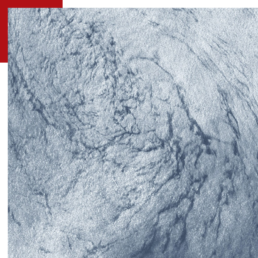Further CBAM information for companies supported by GALLEHR+PARTNER®
Customers of GALLEHR+PARTNER® and their partner companies can find further information, instructions and practical support to meet the requirements of the Carbon Boarder Adjustment Mechanism on this website. Here you will find explanations of CBAM terminology, specific CBAM forms from GALLEHR+PARTNER® to download, video tutorials on the relevant CBAM forms and further information on CBAM topics. If you have any questions or comments, please do not hesitate to contact us.

Supporting CBAM documents from GALLEHR+PARTNER®

Video instructions for the GALLEHR+PARTNER® CBAM documents
These videos show you step by step how to complete the CBAM documents provided by GALLEHR+PARTNER®. The letters S, for supplier, and M, for manufacturer, show who the videos are generally aimed at. Please note this if you are watching the videos from a different role.
Video-Tutorial: S filling 01_purchase_list
Video-Tutorial: M1 filling B_Base_Data Dokument
Video-Tutorial: M2 filling C_Emissions_Data Dokument
Supplier
A supplier is someone who buys goods and sells them on. It does not operate the facilities in which these goods are manufactured.
Sub-supplier
A sub-supplier is someone who resells goods to another supplier. They do not manufacture the goods and are not in direct contact with the European importer.
Manufacturer
The term manufacturer is used synonymously with the term operator. In other words, the legal entity that operates systems that produce CBAM goods.
Operator
In CBAM terminology, the operator is the company that operates one or more facilities in which CBAM goods are manufactured.
Installation
An installation refers to the factory or process route in which CBAM goods are manufactured. It is not necessary to name all machines/tools involved, but only the entire plant. For CBAM, the relevant plant is always the last one that essentially changes the good (melting, moulding, pressing, ...). The packaging and assembly of parts does not count as a significant change.
Glossary
Embedded emissions
The term "embedded emissions" refers to the greenhouse gas emissions associated with the production of that commodity. In general, the value is determined by calculating the emissions of a factory/facility and dividing the total emissions by all goods produced in that factory/facility during the calculation/tracking period.
Standard emission values
The EU Commission has published a list of emission values for each CN code covered by the CBAM Regulation. These values apply to all products covered by the respective CN code and are expressed in tonnes of CO2 per tonne of product. The values are global values, i.e. they apply to production in every country. The values include direct and indirect emission values. Default emission values can only be used until 31 July 2020, after which the specific embedded emissions generated by the respective factory/plant must be reported.
Direct emissions
Direct emissions are greenhouse gas emissions that arise directly during the processing of the goods. For example, the emissions caused by the combustion of coke and natural gas in a blast furnace.
Indirect emissions
Indirect emissions are greenhouse gas emissions that are caused indirectly. For example, if a plant requires electricity to process a product, the indirect emissions are those that are released during electricity generation for the specific amount of electricity.
Questions and answers:
Is an assembly/packaging site a CBAM-relevant facility?
No. The plant relevant for CBAM is the last plant where actual changes are made to the goods (e.g. rolling, melting, cutting, ...). Packing and assembling different parts is not considered an actual change to the goods.
Is every tool/machine within a process route a system?
No. The plant consists of all machines/tools required for the production of a product. For example, a plant for iron and steel products can consist of: a blast furnace, a steel production process (e.g. Linz-Donawitz steel production) and a hot rolling process. It is not necessary to name all the machines/tools involved, only the entire plant.
Do I have to take all systems and upstream processes into account?
Only the last installation that made significant changes to the product must be reported. When determining the embedded emissions, however, emissions from upstream processes must also be taken into account. Only emissions from the extraction of raw materials are excluded from CBAM, but if the raw materials have already been processed before your processing steps, these emissions must be included.
What are the standard emission values?
At the beginning of the CBAM transition period (the first three reports), it is permitted to use default emission values instead of specific emission values. The EU Commission has published a list of default emission values based on the CN code. You can find this list here: LINK. The default emission values can be used without restriction for the first three reports. After that, a good justification must be provided if the default values are to be used.
Questions and answers:
What are specific embedded emissions?
The term specific embedded emissions refers to the CO2 emissions generated during the production of a good, e.g. if the production requires the combustion of fossil fuels or if electricity is needed (which is often generated by CO2-emitting processes). This means that a certain amount of CO2 emissions was generated during the production of this item, which should be allocated to this good in order to keep track of the CO2 emissions generated.
How do I determine the specific embedded emission of a product?
There are various ways to determine the specific embedded emission of goods. The following question relates to which methods are recognised by the EU Commission. In general, the embedded CO2 emission can be measured directly or calculated based on the flow of the source material, the activity level and some scientific assumptions. The EU Commission has provided a tool that can be used to determine the emission value based on the material flow. You can find this tool here: LINK
Which method can I use to determine the specific emissions of the goods produced in my plant?
Until 31 December 2024, the following methods for determining the specific emission value are permitted:
- a carbon pricing system at the installation site;
- a mandatory emissions monitoring system at the installation site;
- an emissions monitoring system at the installation site, which may include verification by an accredited verification body;
- Determination of emissions from emission streams based on activity data obtained using measurement systems and calculation factors from laboratory analyses or standard values;
- Determination of emissions from emission sources by continuous measurement of the concentration of the greenhouse gas concerned in the waste gas and the waste gas stream.
After 1 January 2025, only the latter two methods will be permitted.
What is a UUID?
A UUID is a universally unique identifier. It is a series of numbers, letters and hyphens which, as the name suggests, is unique. We use the UUID to allocate purchases to a specific installation and operator. You are asked to use such a UUID in the document B_Base_Data in general and to use the same in all other documents (01_purchase_list..., C_Emission_Data). Here you will find a document that shows which UUID should be used in document 01_purchase_list... should be used: LINK
Supporting links from the EU Commission:
You can find more information about our company here:

